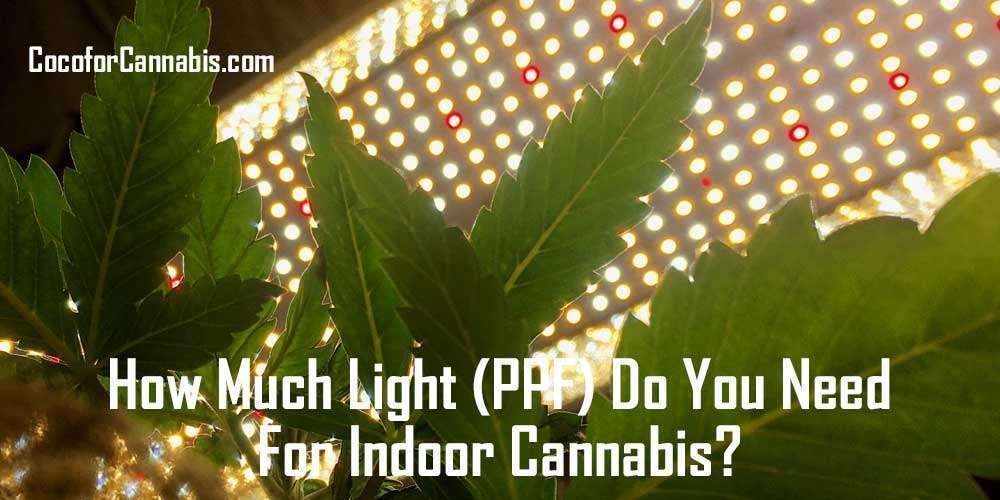The paper at
this link may be of interest. Couple what you read there with the comments from Dr. Bruce Bugbee (check out his videos on YouTube) and, loosely speaking, the more light you throw at cannabis the better but…
There's always a "but", eh?
Bugbee states, unequivocally, that light is the driving force behind yield and, interestingly, he also says that the quality of the light (the spectrum) is secondary to the amount of light. Strangely, however, a paper that his team published in August reveals that yield drops once your percentage of blue light exceeds 10% so there appears to be a conflict.
Putting that aside, he makes it clear that increasing PPFD is only one part of the equation needed to increase yield. Overall, there are nine environmental factors that have to be taken into account to increase yield. The nine are listed in one of his videos and he equates pumping up the light without improving the other aspects of the grow environment is like putting a huge engine in a car and running it on the Bonneville Slat flats - that works just fine but you need to improve the brakes and the suspension, as well.
The attachment is part of the Chandra paper. It's a great reference but should be considered in the context of the entire paper.
View attachment 5018584
This graphic is from the company that makes "Photone" AKA Korona, a program that measures PPFD using a smartphone. I'm surprised to see DLI's that are so low but the programmer who wrote the app stands behind it.
View attachment 5018585
This
document is from LI-COR, a company that makes PAR meters and, thus, is a competitor to Apogee which is the company that Dr Bugbee owns. It's the best summary of the light issue that I've seen.
My personal take on this is to integrate high DLI with "high" temperatures and ensure that VPD is as close as possible to optimal. Having said that, though, I also see the law of diminishing returns, as Bugbee talks about and as the Chandra paper illustrates. At issue is that, once PPFD goes over 700, the rate of increase in yield begins to diminish. No surprise, that. You'll see comments on various forums about it not being cost effective but that's very situationally dependent. For a commercial grower, increasing electricity cost by 10% could result in a yield increase of 20% (for example). For a personal grower, it's a different issue.
My current grow - though it might be dying from an unsolvable Mg deficiency - is Gelato autos at a DLI of 36. I'm at that level because, until a few hours ago, the grow has been suffering for over a week so I've kept DLI in the high 20's and low 30's. Were it not for that I'd have pushed them in the low 40's or, perhaps, higher. My ambient temp is only in the high 70's and my VPD is 1.0± so conditions are pretty good. Except for the fact that they're been ravaged by a nute issue.

I hope this is helpful.
What are you using to measure PPFD?





